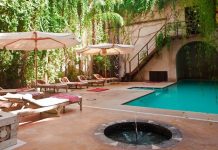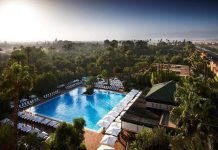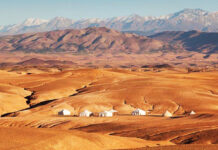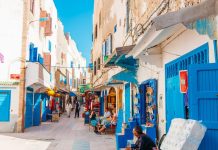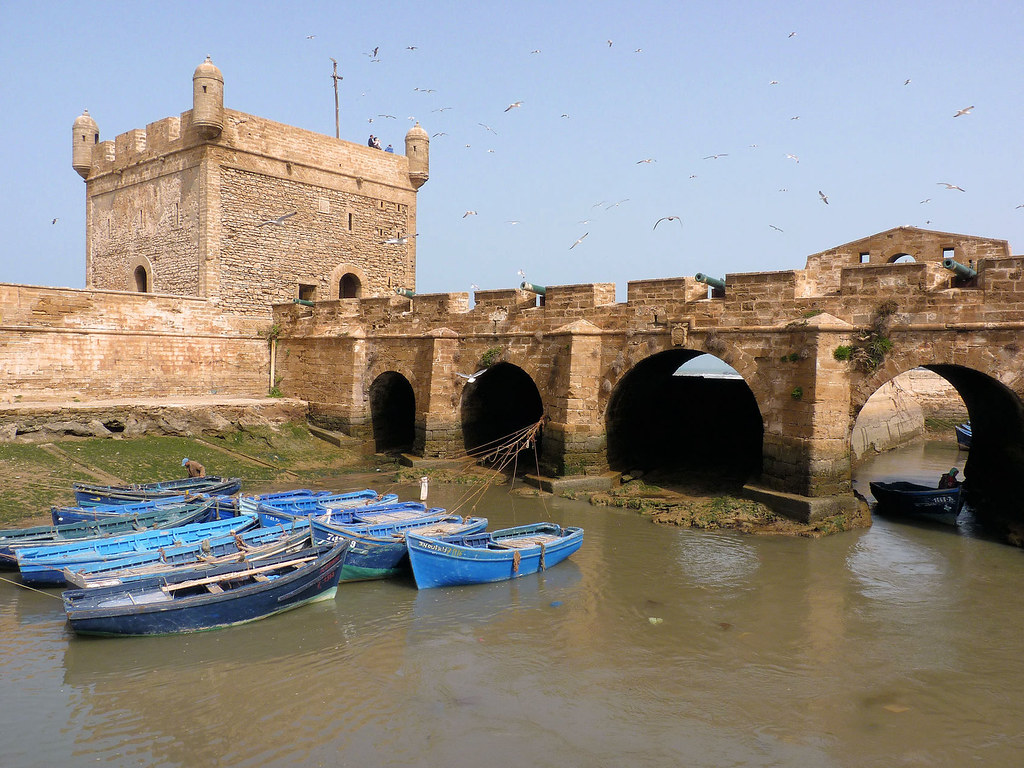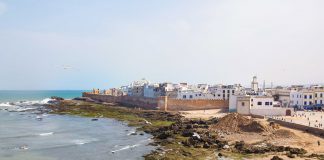Port Scala
The “sqala (term designating a rampart in Morocco) of the city” continues the sqala of the Kasbah. You don’t get to the latter, which is quite narrow. On the other hand, the city’s sqala offers a beautiful pedestrian esplanade 200 meters long; it is reached by the ramp that leads to the northern bastion. The crenellated wall is still defended by an impressive alignment of bronze cannons. Some bear particularly elaborate Spanish or Portuguese coats of arms.
The ramparts contribute to the charms of Essaouira. They place the city in history; they surround it with their stones which take ocher tones of the most beautiful effect at sunset. They also enter the city, closely bordered by whitewashed facades. Ancient cannons compete for seagull slots and the ocean tirelessly hits the wall.

The walls
Les Remparts is a city center hotel, a minute’s walk from the port, where the cannons defending the city are located. It is a very quiet place with rooms overlooking the sea, installed in a riad renovated into guest houses. There is a central courtyard around which the rooms, free wifi, satellite TV, mini-bar, spa, etc. are organized. The price of the rooms ranges from 90 to 110 euros for a standard double room, 210 euros for a room with a king size bed, all in high season. It is ideal for a honeymoon.
Bab Sebaa
Bab Sebaa means the Door of the Lion. It is one of the gates of the walls of your excursion Essaouira, which overlooks the gardens of Orson Welles. You can exit Bab Sebaa towards the beach or an old district, the Borj. If you enter the Medina, take avenue du Caire, where the former house of the governor general of Essaouira is located, which was a bank in the 19th century. Next to it is also a football field where young people come to play at the end of the evening.

Bab Moulay Youssef
The main street gate
The door of the medina called Bab Moulay Youssef Avenue de l “Isiqlal separates from Noba Avenue Ibn Nafi. It is a simple low height door, formed by three different arches and a curious pink probably by sea breezes and wear of the world. Before transferring this door, we find the shopping district and the souk of Essaouira, after that we pass this door to a completely quiet street where there are no shops and leads us directly to the port.
Fortifications of Théodore Cornut
Essaouira means “the well drawn” and it is a French, Théodore Cornut, who started the development of this city; he designed it. He had been hired in 1764 by Sultan Mohammed bin Abdellah, but after three years the two fell out and the Sultan dismissed Cornut.
The latter, originally from Avignon, was a disciple of Vauban and this is strongly felt in Essaouira when you look at the bastions of assembled stones. The medina on the other hand was finished after the departure from Cornut.
Navy Gate
This door which opens on the quay of the port gives a first access to the city. it dates from 1806. In neoclassical style, two fluted columns support a triangular pediment. Two watch towers are very close together for control. This door rests on the rampart, the sqala which protects the fishing port. Bronze cannons are still in place.


